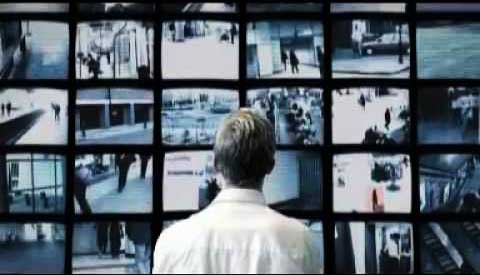Via Infowars.com
System alerts authorities to ?suspicious behavior? before crime is committed
Hundreds of pre-crime surveillance cameras are to be installed in San Francisco?s subway system that will analyze ?suspicious behavior? and alert guards to potential criminal or terrorist activity ? before any crime has been committed.
httpv://www.youtube.com/watch?v=LeLo1YgyAg8
?Manufacturers BRS Labs said it has installed the cameras at tourist attractions, government buildings and military bases in the U.S. In its latest project BRS Labs is to install its devices on the transport system in San Francisco, which includes buses, trams and subways,? reports the Daily Mail.
The cameras are programmed with a list of behaviors considered ?normal?. Anything that deviates from usual activity is classified as suspicious and guards are immediately alerted via text message or a phone call.
Equipped with the ability to track up to 150 suspects at a time, the cameras build up a ?memory? of suspicious behavior to determine what constitutes potential criminal activity.
A total of 288 cameras will be installed across 12 transport hubs.
Authorities are increasingly turning to pre-crime methods of surveillance in order to reduce the need for human intelligence and eliminate the requirement for camera footage to be watched by employees in real time.
The technology is inextricably linked with the 2002 science fiction film Minority Report starring Tom Cruise, based on the short story by Philip K. Dick. The movie depicts a ruthless police state that employs psychics called ?precogs? to apprehend criminals before crimes occur.
Law enforcement agencies in Washington D.C. are already using a software database developed by the University of Pennsylvania that they claim can predict when crimes will be committed and who will commit them, before they actually happen.
The technology sifts through a database of thousands of crimes and uses algorithms and different variables, such as geographical location, criminal records and ages of previous offenders, to come up with predictions of where, when, and how a crime could possibly be committed and by who.
The program operates without any direct evidence that a crime will be committed, it simply takes datasets and computes possibilities.
Other forms of pre-crime technology in use or under development include neurological brain scanners that can read people?s intentions before they act, thus detecting whether or not a person has ?hostile intent?.
Pre-crime technology is also being rolled out in airports and other public venues in order to identify suspect travelers and single them out for interrogations. This face-scanning system ?successfully discriminates between truth and lies in about two-thirds of cases,? which equates to little more accuracy than chance alone, making it even less reliable than the notorious polygraph test, which has been widely discredited and is habitually inaccurate.
As we have previously documented, the Department of Homeland Security?s FAST program is based around similar technology that professes to detect ?malintent? by means of pre-crime interrogations and physiological scans.
A promotional video for the program shows individuals who attend ?security events? being led into trailers before they are interrogated as to whether they are terrorists while lie detector-style computer programs analyze their physiological responses. The subjects are asked about their whereabouts, and if they are attempting to smuggle bombs or recording devices into the ?expo,? proving that the technology is intended to be used at public events and not just airports. Individuals who do not satisfy the first lie detector-style test are then asked ?additional questions?.
As surveillance cameras become more sophisticated, the temptation to use pre-crime technology is likely to intersect with the rollout of so-called ?smart? street lighting systems that double as ?homeland security? spying hubs.
As we have documented, talking surveillance cameras that bark orders at passers-by and can also record conversations are heading for U.S. streets, with the government-backed introduction of the ?Intellistreets? system.




